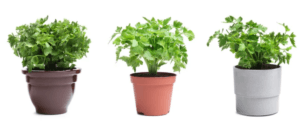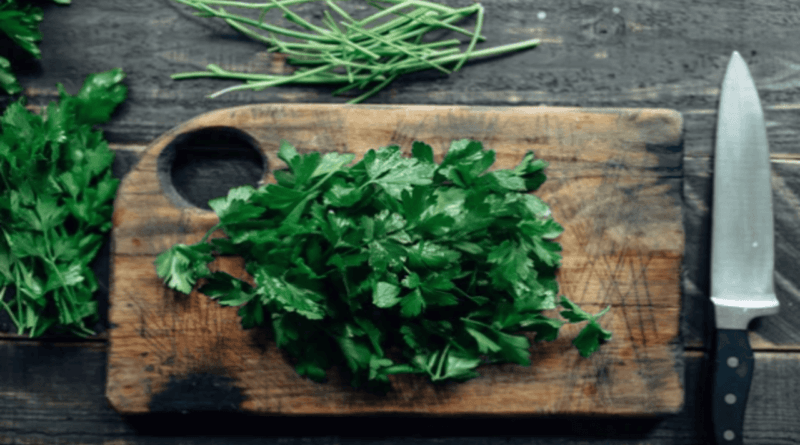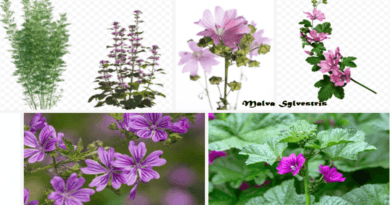Exploring the Many Uses of Parsley: A Versatile Herb
Parsley is more than just a garnish on your dinner plate. This vibrant herb, rich in nutrients and flavor, has earned a prominent spot in kitchens and traditional medicine worldwide. Its distinctive taste and impressive nutritional profile make it a valuable addition to various dishes and health routines. Whether you’re a seasoned cook or a health enthusiast, parsley’s benefits are worth exploring and incorporating into your life.
Nutritional Benefits of Parsley

Parsley is packed with essential vitamins and minerals that contribute significantly to your overall health. It is particularly high in vitamins A, C, and K. These vitamins play crucial roles in maintaining eye health, boosting the immune system, and supporting bone strength. For instance, vitamin A is vital for good vision, vitamin C enhances immunity and skin health, and vitamin K helps in blood clotting and bone density.
Additionally, parsley is an excellent source of iron, calcium, and antioxidants. Iron supports healthy blood production and prevents anemia, while calcium strengthens teeth and bones. The antioxidants in parsley combat free radicals in the body, reducing oxidative stress and promoting overall well-being. Including parsley in your diet can help reduce inflammation and manage chronic conditions. Its anti-inflammatory properties make it a natural choice for alleviating symptoms of arthritis and other inflammatory disorders. Moreover, the flavonoids in parsley are believed to have anti-cancer potential, which adds to its extensive list of health benefits.
Culinary Uses of Parsley

In the culinary world, parsley is a versatile herb that elevates the flavor and presentation of countless dishes. Its fresh, slightly peppery flavor complements salads, soups, stews, and sauces. Flat-leaf parsley, often called Italian parsley, is ideal for cooking due to its robust and aromatic flavor. On the other hand, curly parsley works wonderfully as a decorative garnish, adding a touch of elegance to your meals.
Popular Recipes Featuring Parsley
- Tabbouleh Salad: This classic Middle Eastern dish combines finely chopped parsley, fresh mint, bulgur wheat, juicy tomatoes, and a squeeze of lemon juice. The result is a refreshing and nutrient-packed side dish.
- Chimichurri Sauce: A traditional Argentine condiment made with parsley, garlic, red wine vinegar, and olive oil. This tangy sauce pairs beautifully with grilled meats and vegetables.
- Herb-Infused Butter: Mix finely chopped parsley with softened butter to create a flavorful spread. Use it to enhance grilled seafood, roasted vegetables, or warm bread.
Parsley’s versatility ensures it can adapt to a wide range of cuisines, making it a must-have in every kitchen.
Medicinal Uses of Parsley

Parsley has a long history in traditional medicine, celebrated for its numerous health benefits. It is commonly used as a natural diuretic, aiding the body in eliminating excess fluids and reducing bloating. This property makes it beneficial for managing high blood pressure and promoting kidney health. By supporting efficient fluid balance, parsley contributes to overall wellness.
Parsley tea is a popular home remedy for digestive issues. Sipping on a warm cup of parsley tea can soothe an upset stomach, alleviate bloating, and promote healthy digestion. Additionally, parsley’s antibacterial properties support oral health by combating bad breath and reducing bacteria in the mouth. Regular consumption of parsley tea may also help cleanse the liver, supporting natural detoxification processes and improving metabolic health.
Cosmetic Benefits of Parsley

Parsley isn’t just a kitchen staple; it’s also a natural beauty enhancer with a range of cosmetic benefits. Its high vitamin C content stimulates collagen production, promoting youthful and radiant skin. Applying parsley-infused face masks or toners can help reduce blemishes, dark spots, and uneven skin tone, providing a natural solution for common skincare concerns.
For hair care, parsley’s essential oils nourish the scalp and combat dandruff, leaving hair healthier and shinier. Boiling parsley leaves to create a nutrient-rich hair rinse can enhance shine, strengthen strands, and promote hair growth. Incorporating parsley into your beauty routine is an easy way to harness its natural benefits.
Growing and Storing Parsley

Growing parsley at home is a simple and rewarding endeavor. This hardy herb thrives in well-drained soil and partial sunlight, making it suitable for gardens, balconies, or even kitchen windowsills. Regular watering and occasional pruning encourage lush and healthy growth, ensuring a steady supply of fresh parsley for culinary and medicinal use.
When it comes to storage, proper handling ensures that parsley retains its freshness and flavor. To store fresh parsley, wrap the leaves in a damp paper towel and place them in the refrigerator. Alternatively, you can dry parsley leaves by hanging them in a cool, dark place or use a dehydrator. Freezing parsley is another excellent option—simply chop the leaves and store them in an airtight container or freeze them in ice cube trays with a little water for convenient use later.
Final Thoughts
Parsley is undoubtedly a powerhouse herb, offering a diverse range of culinary, medicinal, and cosmetic uses. Its versatility, combined with its impressive health benefits, makes it an essential addition to any kitchen or garden. By incorporating parsley into your daily routine, you can enhance your meals, improve your health, and even elevate your beauty regimen. This humble yet mighty herb has something to offer everyone, so don’t overlook its potential.




